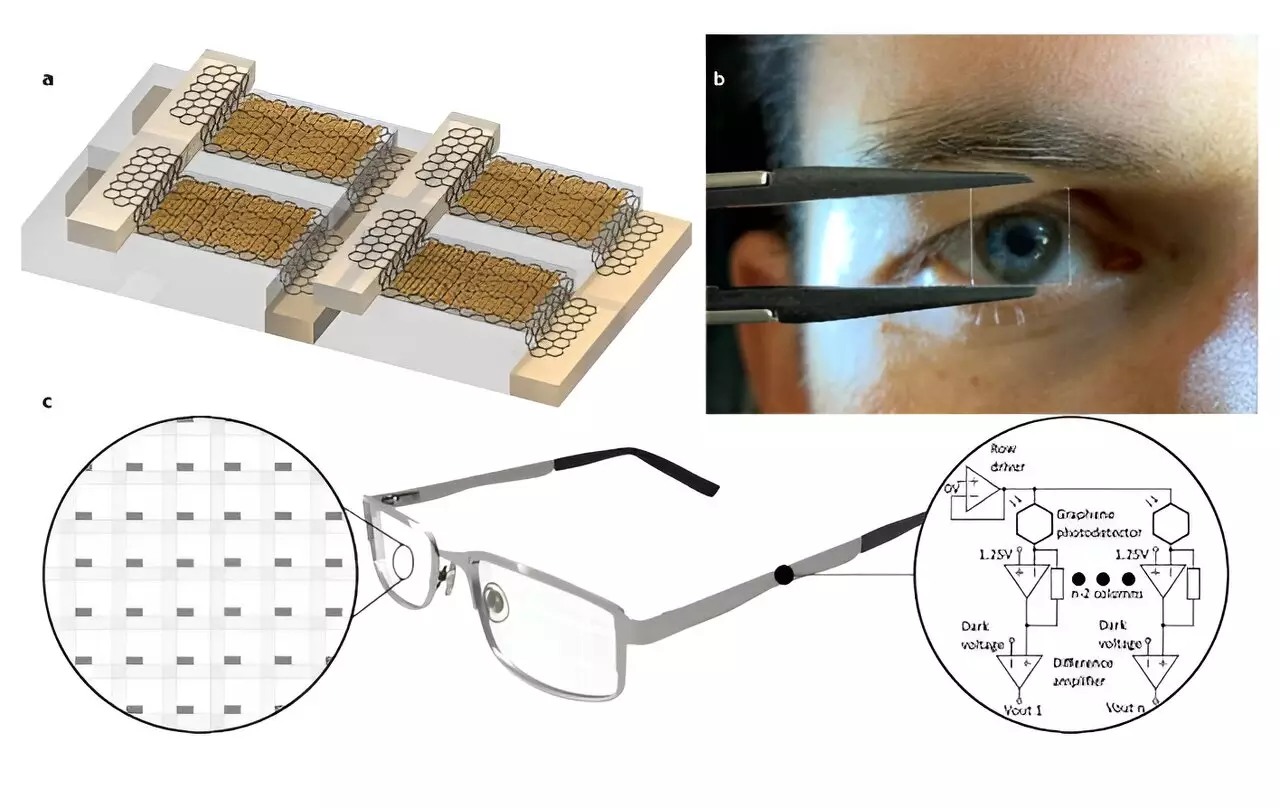In the realm of technology and innovation, eye tracking has become an increasingly valuable tool for a variety of applications. From virtual reality helmets to automotive assistance devices, the ability to track eye movement opens up a world of possibilities. However, the biggest obstacle in implementing this technology has been the obstructive devices that are used to track eye movement. Fortunately, a team of engineers at The Barcelona Institute of Science and Technology’s ICFO–Institut de Ciències Fotòniques has made a breakthrough in this area by developing a nearly transparent camera that can serve as an eye tracker without impeding the user’s view.
To create this revolutionary camera, the research team utilized a photodetector made up of small dots of lead sulfide on sheets of graphene. When a photon strikes these dots, electrons are emitted and flow across a layer of carbon atoms, generating a current. The materials used in the photodetector are so minuscule that they are nearly invisible to the naked eye, allowing 95% of light to pass through it. This remarkable feat overcomes the primary challenge faced by traditional eye tracking devices – obstructing the user’s field of vision.
The researchers conducted various tests to assess the camera’s performance. They projected greyscale patterns onto the photodetector and compared the output with a standard image sensor. The results were promising, with a refresh rate of 400Hz – double the rate required for producing reliable imagery. The team even simulated eye tracking by projecting a small dark dot onto the photodetector and successfully tracked the movement in real-time.
In terms of applications, the potential for integrating this nearly transparent camera into standard eyeglasses or contact lenses is truly groundbreaking. However, there are still hurdles to overcome before this technology can be widely adopted. For instance, the camera currently lacks a lens, limiting its use to projected images. Additionally, there is a need to refine the image processing capabilities and introduce a power source for the processor.
Overall, the development of a nearly transparent camera for eye tracking marks a significant advancement in the field of technology. The potential applications of this innovation range from enhancing virtual reality experiences to revolutionizing automotive safety devices. With further research and refinement, the future looks bright for this groundbreaking technology.


Leave a Reply